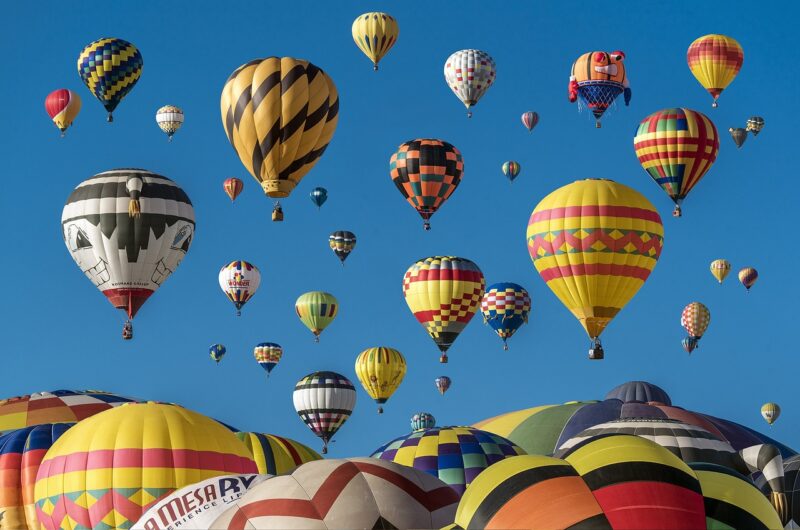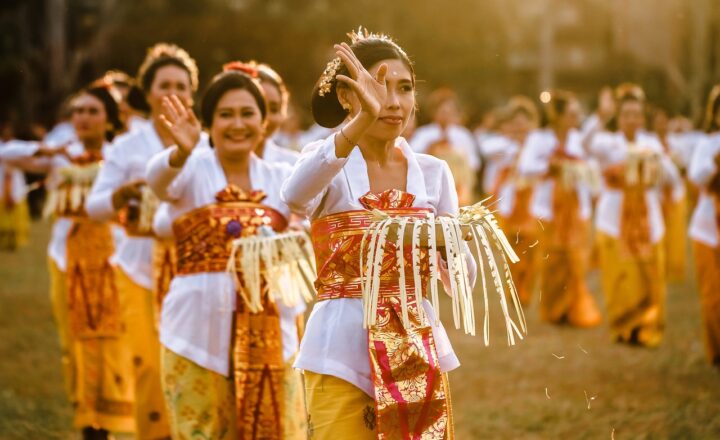10 Unique Festivals Celebrated Around the World and Their Meanings
November 11, 2024

Festivals serve as a vibrant celebration of culture, history, and community, bringing together people from all walks of life. Each festival is unique, often rooted in tradition, spirituality, or historical significance. In this article, we’ll explore ten unique festivals celebrated around the globe, diving into their meanings and cultural importance.
1. Diwali – The Festival of Lights (India)
Diwali, also known as the Festival of Lights, is celebrated by millions across India and around the world. This five-day festival signifies the victory of light over darkness and good over evil.
Cultural Significance: Diwali marks the return of Lord Rama to Ayodhya after defeating the demon king Ravana. People celebrate by lighting oil lamps, bursting firecrackers, and exchanging sweets. Homes are often adorned with vibrant decorations to invite prosperity and happiness.
Celebration Highlights: Families gather to perform poojas (prayers) and share festivities with friends and neighbors. The festival culminates on the third day, which is known as Lakshmi Puja, dedicated to the goddess of wealth and prosperity.
2. Carnival – A Celebration of Life (Brazil)
Carnival is an extravagant festival celebrated annually in Brazil, particularly famous in Rio de Janeiro. Known for its vibrant parades, samba music, and dynamic street parties, it captivates millions of participants and spectators alike.
Cultural Significance: Carnival marks the last celebration before Lent, a period of fasting and reflection in the Christian calendar. It’s a time for people to express joy and abandon societal norms through uninhibited parties.
Celebration Highlights: Float parades featuring elaborate costumes, street music, dance competitions, and traditional Brazilian food engage both locals and tourists, creating an electric atmosphere.
3. Hanami – Cherry Blossom Viewing (Japan)
Hanami is a centuries-old Japanese tradition that celebrates the blooming of cherry blossoms in spring. The beauty of these delicate flowers brings communities together for picnics and festivities under the blossoms.
Cultural Significance: Hanami symbolically represents the transient nature of life; the cherry blossoms bloom for a short period and then fall, reminding us to cherish the moment.
Celebration Highlights: Families and friends gather in parks for picnicking, sharing food, and enjoying the beauty of nature while kimono-clad individuals add a touch of tradition to the festivities.
4. Oktoberfest – The Beers and the Brews (Germany)
Oktoberfest is the world’s largest beer festival held annually in Munich, Germany. This 16 to 18-day festival attracts millions of visitors from around the globe, celebrating Bavarian culture and brewing traditions.
Cultural Significance: Originally a royal wedding celebration in 1810, Oktoberfest has evolved into a global festivity highlighting German folk traditions, cuisine, and, of course, beer.
Celebration Highlights: The festival features massive beer tents run by local breweries, traditional music, folk dances, and a wide array of German delicacies, providing a true taste of Bavarian life.
5. La Tomatina – The Tomato Fight (Spain)
La Tomatina is an annual festival held in Buñol, Spain, where participants throw tomatoes at each other for fun. This unique and messy festival is held on the last Wednesday of August.
Cultural Significance: Although the exact origins are unclear, La Tomatina is believed to have started from a local food fight in 1945 during a parade. It has since grown into an internationally recognized event, attracting thousands of people.
Celebration Highlights: Throughout the day, trucks loaded with ripe tomatoes cruise through the streets, and as the fight begins, a joyous mass of tomato-splattered participants revel in the silliness and spontaneity of the event.
6. Holi – The Festival of Colors (India)
Holi, the Festival of Colors, is widely celebrated in India and signifies the arrival of spring. Known for its vibrant displays of colored powders, it represents love, friendship, and the triumph of good over evil.
Cultural Significance: Holi celebrates the love between Radha and Krishna and honors the victory of Prahlada over the demoness Holika.
Celebration Highlights: People come together to throw colored powders, sing, dance, and share sweets. The festival promotes unity and joy, breaking down social barriers as everyone participates together.
7. Songkran – Water Festival (Thailand)
Songkran marks the Thai New Year and is celebrated with joyous water fights nationwide. Taking place in mid-April, this festival symbolizes the washing away of sins and bad luck.
Cultural Significance: Songkran is rooted in Buddhist traditions, and people visit temples to pay respect to their ancestors while sprinkling water over statues of the Buddha.
Celebration Highlights: The festival turns into a citywide water fight, where participants armed with water guns, buckets, and hoses drench each other in a celebratory atmosphere that encourages laughter and camaraderie.
8. Day of the Dead – Honoring the Departed (Mexico)
The Day of the Dead (Día de los Muertos) is a Mexican festival that honors deceased loved ones. Celebrated from October 31 to November 2, this vibrant festival is a mix of indigenous and Spanish traditions.
Cultural Significance: The festival reflects the belief that the dead return to the earth for a brief time each year, allowing families to reconnect and celebrate their lives.
Celebration Highlights: Altars decorated with flowers, photographs, food, and sugar skulls fill homes as families gather to remember their loved ones through storytelling, music, and communal meals.
9. Midsummer – A Celebration of Light (Sweden)
Midsummer, celebrated in Sweden around the summer solstice, is a joyous occasion that commemorates the longest day of the year. This festival is characterized by various customs including flower crowns, dance, and traditional Swedish food.
Cultural Significance: Midsummer evokes feelings of joy and celebration of nature. Traditionally, it’s regarded as a time for fertility and renewal.
Celebration Highlights: People gather around a maypole, singing and dancing folk songs while feasting on pickled herring, new potatoes, and strawberries, making it a perfect summer celebration.
10. Running of the Bulls – A Bravado of Tradition (Spain)
The Running of the Bulls (Encierro) is part of the San Fermín Festival held annually in Pamplona, Spain. This tradition involves running in front of a group of bulls that are let loose on the town’s streets.
Cultural Significance: This spectacle has roots in celebrating San Fermín, a patron saint of Navarra. It promotes a sense of courage and tradition.
Celebration Highlights: Spectators line the streets to cheer as participants make a thrilling dash down the streets, culminating in a lively atmosphere filled with music, dancing, and bullfighting events.
Conclusion
As seen in these diverse festivals, celebrations are more than just events; they embody the rich tapestry of cultural heritage and community spirit. From the colorful celebrations of Holi to the joyous water fights of Songkran, each festival offers a unique experience of love, remembrance, and community. Festivals bridge gaps, allowing people to come together and celebrate life in its myriad forms, reminding us of the joys found in unity, tradition, and culture.
By participating in these events, we embrace our shared humanity and the beauty of our differences, creating memories that are cherished for years to come.








